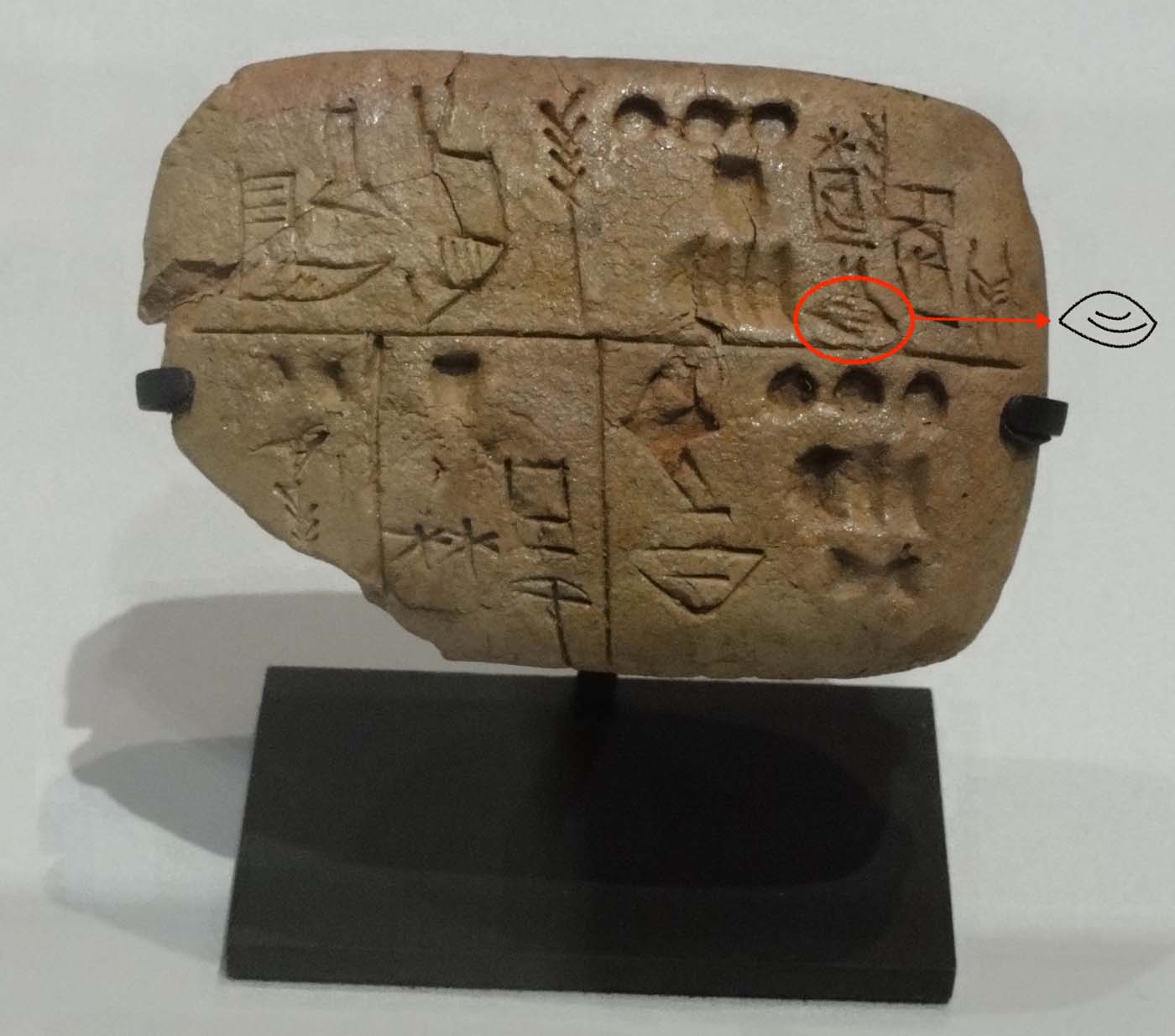
Detail of sign ŠÀ from AO 29561 (CDLI P005337)
The cuneiform sign ŠÀ, libbu in Akkadian, is a general term used to refer to the internal organs of the body, both animal and human. It is translated with “heart” (the original pictogram from which the sign developed probably depicted an animal heart), but also with “abdomen,” “belly,” “womb,” etc. and was considered to be the seat of emotions, as well as of thought and will. In combination with other signs, it also referred to notions more specific to the guts. For instance, when used in the plural (ŠÀ.MEŠ), it was equivalent to Akkadian qerbū: “insides,” or “intestines” (which can be swollen, hurt, red, constipated, etc.); when used with the determinative for flesh (UZUŠÀ) the logogram meant instead irrū, which we understand as “bowels” (that can rumble, prolapse, evacuate, etc.). In different contexts, the sign simply pointed to the idea of “inside” or “center.”